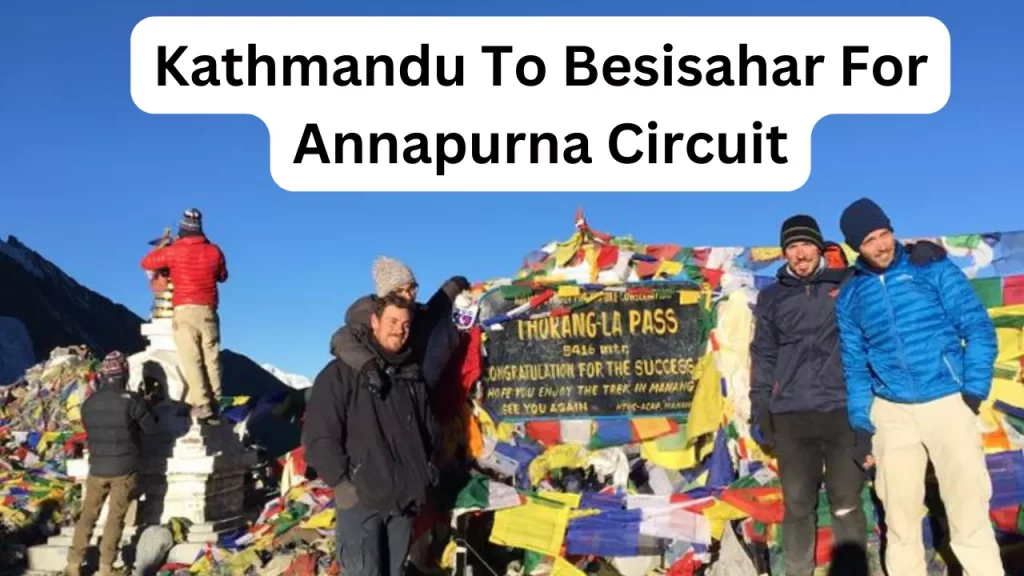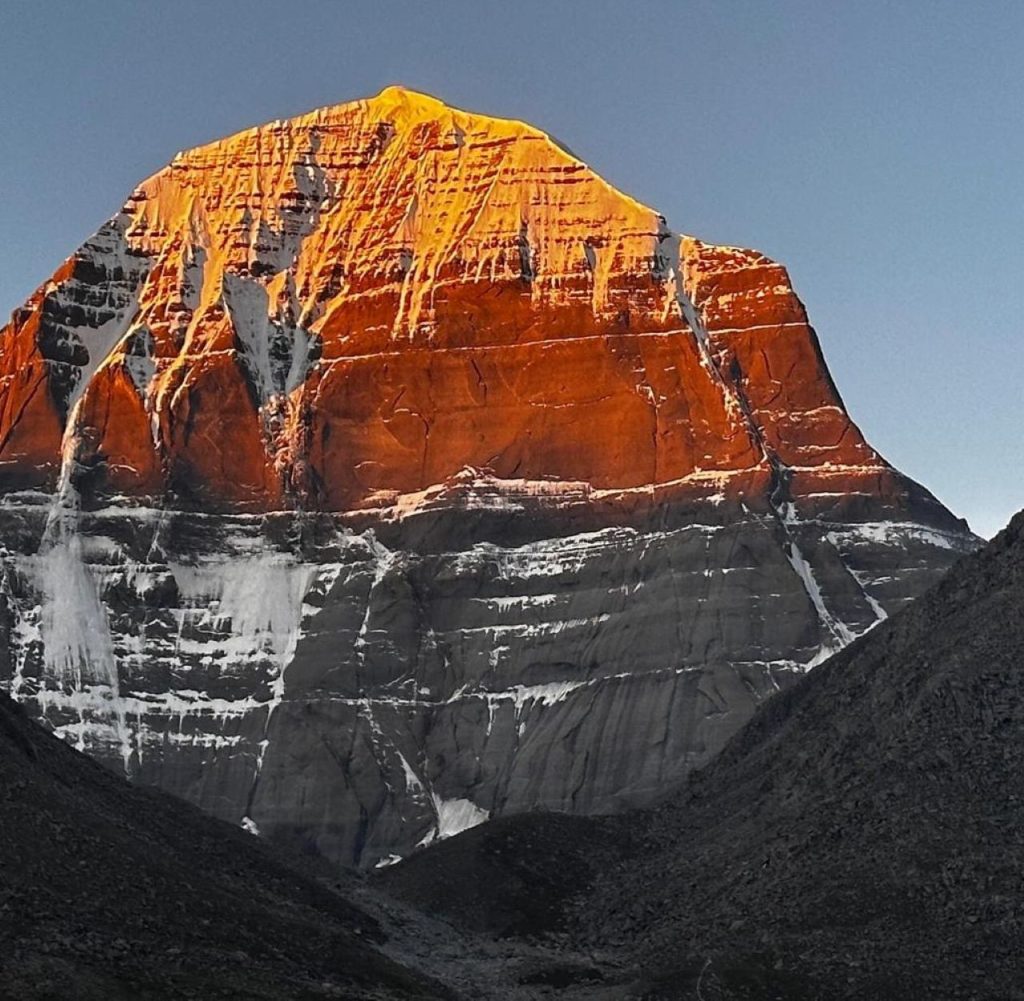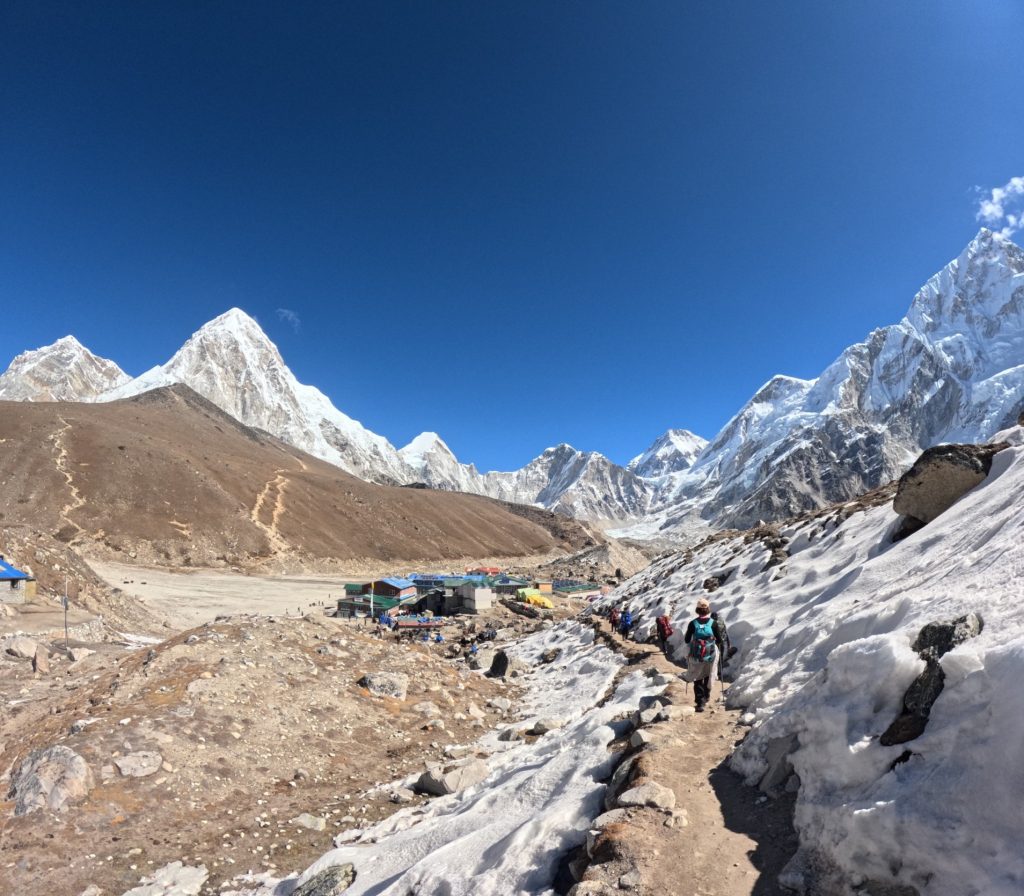
What Makes the Annapurna Circuit Trek Culturally Unique?
The Annapurna Circuit Trek is not just a journey through Nepal’s stunning Himalayan landscapes; it’s an immersive exploration of the region’s rich cultural heritage, offering valuable cultural insights on the Annapurna Circuit trek. Spanning diverse ethnic communities and centuries-old traditions, the trek provides a unique opportunity to witness the harmonious blend of natural beauty and human culture.
From the moment you set foot on the trail, you’ll encounter villages that preserve ancient ways of life, each with its distinct language, architecture, and customs. The Annapurna Circuit is home to a mix of Gurung, Thakali, and Tibetan communities, whose lives are deeply intertwined with the mountains they call home.
One of the most remarkable aspects of this trek is the spiritual depth of the region. The trail is dotted with Buddhist monasteries, chortens, and prayer flags, each adding to the sense of peace and reverence in the high-altitude terrain. These sacred sites offer trekkers a glimpse into Buddhist practices and serve as a testament to the enduring spirituality of the local people.
What sets the Annapurna Circuit apart is the chance to experience culture in its purest form. Trekking through these remote areas allows you to step into a world that has remained largely untouched by modernity. Whether it’s watching monks perform daily rituals in a centuries-old monastery or sharing stories with a local family over a steaming bowl of dal bhat, the trek promises moments of genuine cultural connection that are as enriching as the breathtaking views.
By the end of the journey, you’ll realize that the Annapurna Circuit isn’t just a physical adventure but also a cultural expedition that leaves a lasting imprint on your soul. This blend of natural splendor and cultural richness is what truly makes the Annapurna Circuit Trek a once-in-a-lifetime experience.
Table of Contents
Why Is the Annapurna Circuit Trek a Must-Visit for Adventure Enthusiasts?
The Annapurna Circuit Trek stands as one of the most iconic adventure experiences globally, offering a blend of challenging terrains, breathtaking landscapes, and rewarding high-altitude experiences. It’s a trek that caters to both seasoned hikers and those seeking their first taste of Himalayan adventure.
Diverse Terrain
The trek spans a wide range of altitudes, from lush subtropical forests at lower elevations to arid, high-altitude landscapes as you approach the Thorong La Pass at 5,416 meters. This geographical diversity ensures that no two days on the trail are the same. You’ll traverse suspension bridges, climb steep inclines, and walk through serene valleys surrounded by towering peaks.
Thrill of the Thorong La Pass
For adrenaline junkies, crossing the Thorong La Pass is a highlight of the trek. As one of the highest navigable passes in the world, it presents both a challenge and a sense of triumph for trekkers. The breathtaking views of Annapurna and Dhaulagiri range from the pass and are worth every ounce of effort.
Adventure Beyond Trekking
The Annapurna Circuit Trek isn’t just about walking. Activities like exploring ice-blue glacial lakes such as Tilicho Lake, soaking in natural hot springs at Tatopani, or experiencing the windswept desert-like terrain of Mustang add layers of adventure to the journey. Each day presents a new opportunity to push your limits and embrace the unpredictable beauty of the Himalayas.
Safety and Accessibility
Despite its adventurous appeal, the trek is surprisingly accessible, with well-maintained trails and ample teahouses for accommodation. This balance of adventure and safety makes it a popular choice for trekkers worldwide. With proper preparation and acclimatization, the challenges become part of the fun, allowing you to savor every step of the journey.
The Annapurna Circuit Trek offers more than just adventure; it provides an unparalleled sense of accomplishment and a deeper connection to nature. For those seeking an unforgettable experience that combines physical challenges with awe-inspiring beauty, this trek is an adventure enthusiast’s dream come true.
What Are the Main Cultural Highlights Along the Annapurna Circuit?
The Annapurna Circuit Trek is not only a journey through diverse landscapes but also an exploration of the region’s rich cultural heritage. This trek offers a unique opportunity to connect with the Gurung, Tibetan, and other Himalayan communities that have thrived in the region for centuries.
Which Cultures Influence the Annapurna Circuit Region?
The Annapurna Circuit is a melting pot of cultural influences, primarily shaped by the Gurung and Tibetan communities.
- Gurung Culture: Known for their warm hospitality, the Gurung people have a rich tradition of music, dance, and folklore. Villages like Ghandruk provide a glimpse into their daily lives, with traditional houses, terraced farming, and their famous hospitality.
- Tibetan Influence: As you ascend to higher altitudes, Tibetan culture becomes prominent. The architecture of houses, the fluttering prayer flags, and the chants of “Om Mani Padme Hum” resonate deeply with the region’s spiritual ambiance.
The historical evolution of these cultures is intertwined with the region’s trade routes, migration patterns, and the influence of Buddhism, which permeates the entire circuit.
What Are the Must-Visit Monasteries on the Annapurna Circuit?
The Annapurna Circuit is dotted with ancient monasteries, each offering a spiritual reprieve amidst the rugged trek.
- Braga Monastery: Located near Manang, this centuries-old monastery is perched on a hill and offers stunning views of the Annapurna range. It houses ancient statues, religious manuscripts, and a serene atmosphere perfect for meditation.
- Kagbeni Monastery: This Tibetan-style monastery in the lower Mustang region is a gateway to the upper Mustang and holds spiritual significance for both locals and visitors.
Other smaller stupas, prayer wheels, and mani walls along the trail add to the spiritual essence of the trek, making it not just a physical journey but a soulful one as well.
Why Are Local Festivals Important During the Trek?
Timing your trek to coincide with local festivals adds a layer of cultural immersion to your adventure.
- Dashain and Tihar: Celebrated by communities across Nepal, these festivals bring the villages along the trail to life. Homes are adorned with lights, and locals engage in traditional rituals, dances, and feasts.
- Tibetan New Year (Losar): Particularly significant in the high-altitude regions, Losar marks the Tibetan New Year and is celebrated with prayers, incense burning, and communal feasting.
Participating in these festivals offers trekkers a rare chance to witness the unique blend of Hindu and Buddhist traditions, fostering a deeper connection with the local communities.
What Is Village Life Like on the Annapurna Circuit?
Village life along the Annapurna Circuit is a reflection of simplicity, resilience, and cultural vibrancy. Each village offers a unique window into the traditions, practices, and daily routines of the Himalayan people, shaped by the rugged terrain and centuries of heritage.
- Manang: Nestled in the heart of the Annapurna region, Manang is a bustling village that serves as an acclimatization stop for many trekkers. The stone-built houses, yak pastures, and ancient monasteries showcase the harmonious blend of practicality and spirituality in daily life. Locals often engage in farming, trade, and hospitality, making it an ideal place to observe their way of life.
- Marpha: Famous for its apple orchards and apple brandy, Marpha is a picturesque Thakali village with whitewashed houses and cobblestone pathways. The locals are known for their culinary skills, especially in preparing traditional Thakali meals, and their expertise in preserving fruits and vegetables.
These villages highlight unique cultural practices, such as traditional attire, communal farming, and participation in religious rituals. The rhythm of life is slow and deeply connected to nature, offering trekkers a tranquil respite from the challenges of the trail.
How Do Homestays Enhance Cultural Experiences?
Staying in homestays along the Annapurna Circuit is one of the most rewarding ways to immerse yourself in the local culture.
- Role of Local Accommodations: Homestays allow trekkers to experience daily life firsthand by staying with local families. These accommodations go beyond providing food and shelter; they offer an intimate glimpse into the traditions, beliefs, and practices of the community.
- Cultural Exchange: Whether it’s helping with cooking meals, participating in evening storytelling sessions, or learning a few words in the local language, homestays foster meaningful interactions between travelers and hosts.
For instance:
- In Manang, you might share a cup of yak butter tea while listening to stories about the mountains and legends of the Annapurna region.
- In Marpha, you could join in the preparation of traditional Thakali daal-bhat and learn about the significance of each ingredient in the local diet.
Homestays are more than just places to rest—they are gateways to understanding the region’s deep cultural roots and forging connections that leave a lasting impression.
What Traditional Foods Should You Try During the Trek?
The Annapurna Circuit offers a delectable blend of traditional foods that are not only nourishing for trekkers but also steeped in cultural significance. These dishes provide insight into the local way of life and are a must-try for those seeking an authentic Himalayan experience.
- Dal Bhat: The quintessential Nepali meal, dal bhat consists of steamed rice, lentil soup, and a variety of seasonal vegetables. Rich in carbohydrates and nutrients, it’s a trekker’s staple, offering both energy and flavor.
- Yak Butter Tea: This traditional Tibetan tea, made with yak butter and salt, is a warming drink that helps combat the cold and high altitude. It’s an acquired taste but an essential cultural experience.
- Apple Pie: Villages like Marpha, known for their apple orchards, serve delicious homemade apple pies. These desserts, influenced by Western trekkers, have become a delightful fusion of local and global culinary traditions.
Each dish reflects the region’s resources and adaptability, with meals designed to sustain both locals and visitors in the demanding mountain environment.
How Does Food Reflect Local Traditions on the Trek?
Food along the Annapurna Circuit is more than sustenance; it’s a bridge to understanding the region’s history, culture, and hospitality.
- Dining Customs and Practices: Meals are often served with a side of warm hospitality, with locals ensuring guests are well-fed and comfortable. The communal act of sharing food, whether in a tea house or a homestay, reflects the importance of togetherness in Himalayan culture.
- Stories Behind Popular Culinary Dishes:
- Dal Bhat: Known for its mantra “Dal Bhat Power, 24 Hour,” this dish symbolizes abundance and sustenance. Its simplicity mirrors the resourcefulness of the Himalayan people.
- Yak Butter Tea: Traditionally consumed during religious ceremonies and festivals, this tea signifies endurance and resilience. It’s a staple in cold climates, showcasing how locals adapt to their environment.
- Apple-Based Treats: The rise of apple farming in villages like Marpha reflects the adaptability of the local economy to cater to trekkers while preserving the essence of their produce.
Food on the Annapurna Circuit is a flavorful narrative of the region’s heritage, blending the necessities of survival with the warmth of tradition.
How Does Tourism Impact Local Traditions on the Annapurna Circuit?
Tourism along the Annapurna Circuit brings both opportunities and challenges to local traditions, shaping the cultural landscape in significant ways.
- Positive Effects of Tourism:
- Economic Empowerment: Increased footfall has generated revenue for local communities through homestays, tea houses, and guided treks.
- Revitalization of Traditions: Festivals, handicrafts, and traditional performances gain renewed interest and appreciation when shared with visitors.
- Cultural Exchange: Interaction with trekkers often leads to a dynamic exchange of ideas, enriching both locals and tourists.
- Negative Effects of Tourism:
- Commercialization of Culture: Some traditions risk losing authenticity when adapted for tourist appeal, such as performances or crafts tailored to foreign tastes.
- Erosion of Local Practices: Western influence may sometimes overshadow indigenous lifestyles, especially among younger generations.
- Environmental Strain: Over-tourism can disrupt sacred sites, and improper waste disposal affects the natural and cultural environment.
To counterbalance these challenges, efforts are being made by locals and organizations to preserve the region’s cultural integrity. Projects focus on cultural education, sustainable tourism initiatives, and the promotion of eco-friendly practices.
What Can Trekkers Do to Respect and Support Local Culture?
Trekkers play a vital role in protecting the cultural richness of the Annapurna Circuit. Here are some practical guidelines for responsible trekking:
- Learn About the Culture: Educate yourself about the local customs and traditions before your journey. Awareness fosters respect and helps avoid unintentional offenses.
- Support Local Economies: Stay in locally-run tea houses and purchase handmade crafts or souvenirs directly from artisans. This ensures that your spending benefits the community.
- Dress Respectfully: In rural and religious areas, wear modest clothing to show respect for local norms and traditions.
- Participate, Don’t Impose: Engage in festivals or cultural activities with an open mind, but refrain from altering or trivializing sacred rituals.
- Practice Sustainable Tourism: Carry reusable water bottles and minimize waste. Respect signs and instructions, especially at monasteries and heritage sites.
By adopting these practices, trekkers contribute to a sustainable tourism model that uplifts local communities and preserves their cultural heritage for generations to come.
When are the major festivals celebrated at the Annapurna Circuit?
The Annapurna Circuit comes alive with vibrant festivals that reflect the region’s deep cultural roots. Major celebrations are deeply tied to the local calendar and traditions.
- Key Festivals and Dates:
- Dashain (September-October): This Hindu festival celebrates the victory of good over evil. Homes and villages are adorned, and families come together for blessings.
- Tihar (October-November): Also known as the Festival of Lights, this event is marked by beautiful rangoli, oil lamps, and the worship of animals like crows, cows, and dogs.
- Tibetan New Year (Losar) (February): Celebrated by the Tibetan communities, Losar marks the beginning of the lunar calendar and includes prayers, feasts, and dances.
- How Trekkers Can Join:
- During these festivals, trekkers can witness traditional rituals, taste special festival foods, and enjoy the hospitality of locals. Joining in with respect for customs enriches the trekking experience.
What Makes the Tibetan New Year Special on the Trek?
Losar is one of the most unique and culturally rich festivals trekkers can experience along the Annapurna Circuit, especially in Tibetan-influenced villages like Manang and Upper Pisang.
- Rituals and Festivities:
- Preparatory Cleaning: Homes and monasteries are decorated with colorful prayer flags.
- Ceremonial Offerings: Monks and locals offer prayers and perform rituals to usher in good fortune.
- Cultural Performances: Traditional dances, music, and storytelling are integral to the celebration.
- Trekkers’ Unique Experiences:
- Insight into Spirituality: Witnessing Losar rituals at monasteries provides a deeper understanding of Tibetan Buddhism.
- Special Delicacies: Savor dishes like guthuk (barley soup with dumplings) are prepared exclusively for Losar.
- Participation Opportunities: Many locals warmly invite trekkers to join in, making it an unforgettable cultural experience.
Festivals like Losar offer trekkers a rare chance to immerse themselves in the spiritual and communal spirit of the Annapurna region.
How Can You Prepare for Cultural Immersion on the Annapurna Circuit?
Cultural immersion on the Annapurna Circuit begins with preparation. A little effort beforehand can enhance your interactions and experiences along the trail.
- Suggested Reading and Resources:
- Books: Learn about the region through books like Annapurna: A Trekker’s Guide or works on Nepali and Tibetan culture.
- Online Resources: Dive into blogs or documentaries about trekking in Nepal and the traditions of Gurung and Tibetan communities.
- Language Guides: Familiarize yourself with basic Nepali and Tibetan phrases to connect better with locals.
- Items to Carry for Respectful Interactions:
- Small Gifts: Bring tokens like postcards or simple stationery for children to leave a positive impact without overwhelming communities.
- Traditional Wear Awareness: Modest clothing aligns with local customs and shows respect, especially in villages and religious sites.
- Cultural Journals: A notebook to jot down cultural observations or stories locals may share adds depth to your journey.
What Are the Dos and Don’ts of Engaging with Local Communities?
Respect and mindfulness are essential for a culturally enriching trek. Following a few guidelines ensures meaningful and positive interactions.
- Etiquette Tips for Cultural Respect:
- Dos:
- Always greet with “Namaste” (Nepali) or “Tashi Delek” (Tibetan), often with a slight bow.
- Ask for permission before taking photos, especially of people or sacred objects.
- Remove shoes when entering monasteries or homes.
- Don’ts:
- Avoid pointing feet toward others, especially in monasteries.
- Don’t touch people’s heads, as it is considered disrespectful.
- Refrain from giving money to children, which could encourage dependency on tourism.
- Dos:
- Common Phrases to Use With Locals:
- Greetings:
- “Namaste” – Hello (Nepali).
- “Tashi Delek” – Hello (Tibetan).
- Gratitude:
- “Dhanyabad” – Thank you.
- “Che Che” – Thank you (Tibetan).
- Requests:
- “Maaf garnus” – Excuse me/sorry.
- “Kripaya” – Please.
- Greetings:
By approaching locals with genuine interest and humility, trekkers can foster mutual respect and understanding, making the trek culturally fulfilling.
Conclusion: Embracing Culture on the Annapurna Circuit
The Annapurna Circuit Trek offers more than breathtaking landscapes—it invites you to immerse yourself in the rich tapestry of Gurung, Tibetan, and Nepali cultures. Each interaction, whether through a warm “Namaste” or a shared cup of yak butter tea, deepens your appreciation of the region’s traditions.
By exploring vibrant festivals, savoring local cuisine, and respecting village life, you engage in a meaningful exchange that transcends the physical journey. As tourism grows, so does the importance of responsible trekking—preserving the culture and natural beauty that make this trek extraordinary.
When you approach the Annapurna Circuit with curiosity and respect, you don’t just witness its culture; you become a part of its story. Ready to begin this unforgettable adventure?
FAQs on Cultural Exploration on the Annapurna Circuit
What cultural influences shape the Annapurna Circuit region?
The Annapurna Circuit is deeply influenced by both Gurung and Tibetan cultures. The Gurung people, native to the lower sections of the trek, contribute rich traditions, while Tibetan influences become more apparent as trekkers move into the higher altitudes. These cultures are visible in local art, architecture, festivals, and practices, making the trek not just a journey through nature, but through living traditions.
What are the must-visit monasteries along the Annapurna Circuit?
Notable monasteries like Braga Monastery are essential stops along the trek. These monasteries serve as centers of spirituality and community, often perched on dramatic cliffs with stunning views. Braga Monastery, in particular, is one of the oldest and most significant Tibetan Buddhist monasteries in the region, offering trekkers a glimpse into Tibetan Buddhist practices and architecture.
How do local festivals enhance the trekking experience?
The Dashain and Tihar festivals, widely celebrated along the Annapurna Circuit, offer trekkers a unique insight into the culture and traditions of the people. These festivals are marked by elaborate rituals, festive foods, and community gatherings. The Tibetan New Year (Losar) is particularly special for trekkers, providing a chance to participate in lively cultural festivities, enjoy special meals, and witness vibrant Tibetan rituals.
What can trekkers expect from village life on the Annapurna Circuit?
Village life along the Annapurna Circuit is unique, with villages like Manang and Marpha offering a window into rural mountain life. Locals follow traditional agricultural practices, and many still rely on subsistence farming and animal husbandry. These villages also offer a chance to engage with local cultures, where trekkers may learn about traditional handicrafts, farming techniques, and local rituals.
How do homestays contribute to cultural immersion?
Homestays are an excellent way to engage with local families and experience the day-to-day lives of the people on the Annapurna Circuit. These accommodations offer trekkers the opportunity to share meals, learn about local customs, and forge meaningful connections. Interactions in homestays provide cultural exchange, and trekkers can gain a deeper understanding of the local way of life and the challenges these communities face.
What traditional foods should trekkers try on the Annapurna Circuit?
Some must-try dishes include Dal Bhat, a traditional lentil soup served with rice, and Yak Butter Tea, a staple beverage in higher-altitude Tibetan communities. Another popular treat is apple pie from the village of Marpha, known for its apple orchards. These foods not only nourish trekkers but also hold cultural significance, representing the sustenance and hospitality of the local people.
How does tourism impact local traditions on the Annapurna Circuit?
Tourism has both positive and negative effects. On the positive side, it provides economic opportunities for local communities, promotes the preservation of cultural heritage, and fosters cultural exchange. On the flip side, rapid tourism can strain local resources, disrupt traditional lifestyles, and lead to cultural commodification. Local initiatives and organizations are working to preserve traditions and balance the needs of tourism with the protection of the environment and culture.
How can trekkers show respect for local cultures and traditions?
Trekkers can respect local cultures by being mindful of their behavior, dressing appropriately, and learning a few basic Nepali or Tibetan phrases like “Namaste” (Hello) or “Dhanyabad” (Thank you). Supporting local businesses, participating in festivals respectfully, and following guidelines for sustainable tourism are also important. Always ask for permission before taking photos of people or their property, and be sensitive to local customs and beliefs.
When are the major festivals celebrated on the Annapurna Circuit?
Festivals like Dashain and Tihar typically fall around September and October. These festivals are significant for both Hindus and Buddhists and are celebrated with great enthusiasm across the region. Tibetan New Year (Losar) generally occurs in February or March, depending on the lunar calendar, offering a special opportunity for trekkers to experience vibrant Tibetan cultural rituals.
What are the dos and don’ts of engaging with local communities along the Annapurna Circuit?
Dos:
- Always ask permission before taking photos of people or their property.
- Learn basic local greetings in Nepali or Tibetan.
- Respect local customs and traditions, especially during religious or cultural ceremonies.
- Dress modestly, particularly when visiting monasteries or temples.
Don’ts:
- Avoid discussing sensitive political topics or making disrespectful comments.
- Do not engage in behaviors that disrupt the peace, especially in spiritual places.
- Refrain from giving money or gifts to children on the streets to prevent the fostering of dependency.





